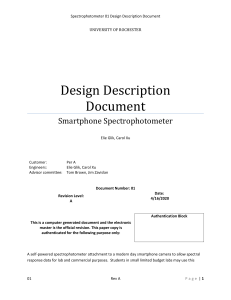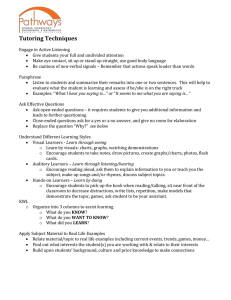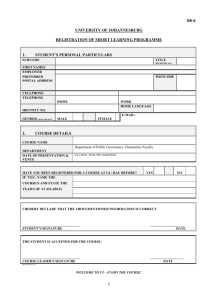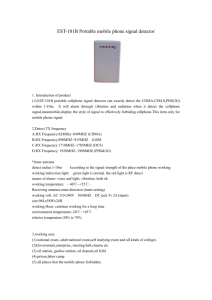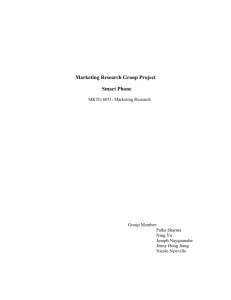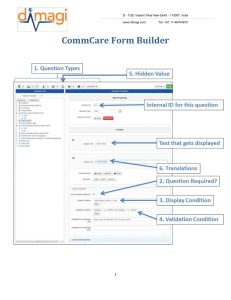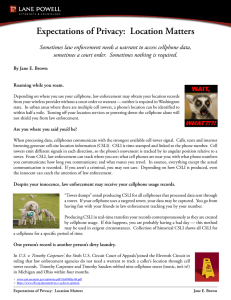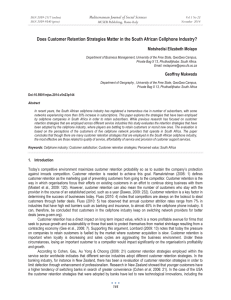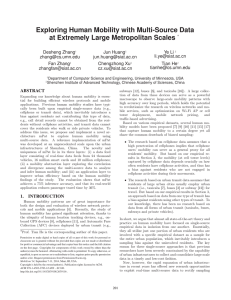Example Product Requirements Document for Cellphone
advertisement
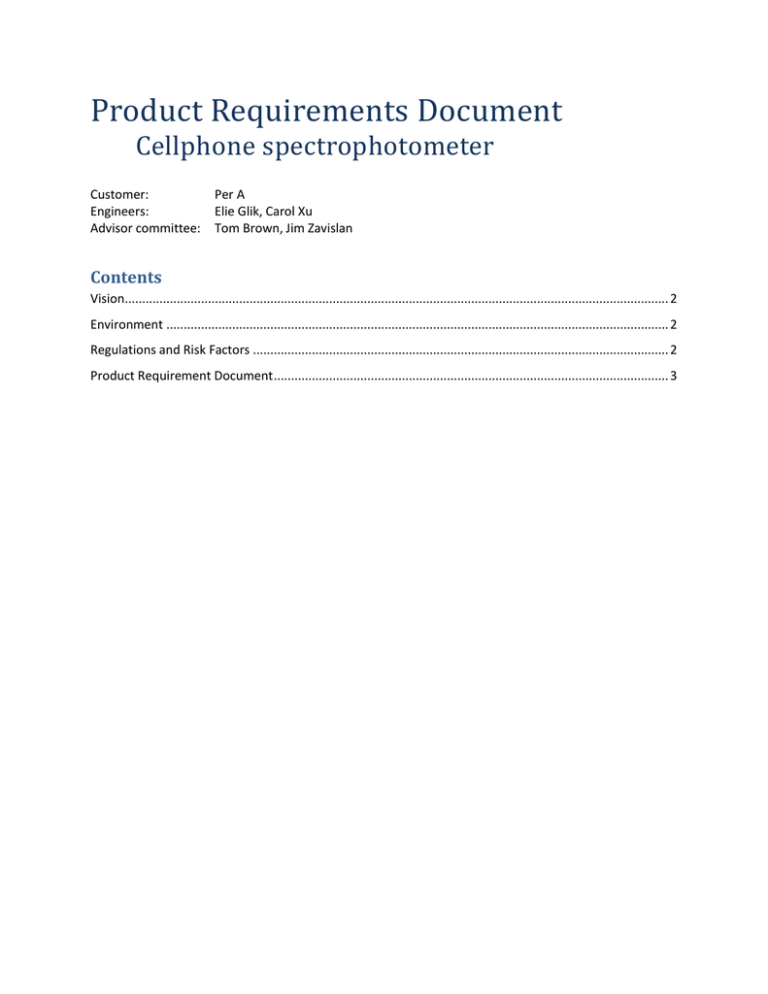
Product Requirements Document Cellphone spectrophotometer Customer: Engineers: Advisor committee: Per A Elie Glik, Carol Xu Tom Brown, Jim Zavislan Contents Vision............................................................................................................................................................. 2 Environment ................................................................................................................................................. 2 Regulations and Risk Factors ........................................................................................................................ 2 Product Requirement Document .................................................................................................................. 3 Vision A self-powered spectrophotometer attachment to a modern day smartphone camera to allow spectral response data for lab and commercial purposes. This attachment should be robust, light, and have a small profile relative to the cellphone. Simple processing will be done onboard, and expert of the spectral photo will be possible. Students in small limited budget labs may use this device along with their smartphone to identify light sources, measure chemical concentrations, compare solutions, and other metrics commonly done with commercial spectrophotometers. Further vision is a more versatile low end spectrophotometer replacement. This device will carefully weigh price, profile size, and resolution in order to accommodate said vision. Environment Temperature: 55-90°F – Safe Operation 60-85°F – Meets Operation Humidity Under 80% humidity Note that environment factors have not been tested During normal operation, no maintenance will be required. Maintenance such as cleaning the glass surface may be required, depending on use, once a month. Calibration will be required frequently for higher accuracy. Device will be less than half the size of a standard tissue box. Regulations and Risk Factors No laser is used. LED illumination is not subject to FCC standards. The system will be designed to mitigate physical risk of the operator even if dropped. The system will need to be tested under appropriate standards depending on where it is sold. Primary market will be US until notified otherwise. Users will require relatively no training under normal circumstances assuming they already are familiar with their smartphone. System will require appropriate disposal under regulations in region of use. System will be Rohs compliant. Product Requirement Document The following describes the requirement for the product. The most important aspect is to stay within the price range for manufacturing the product. The maximum costs are outlined below: Manufacturing cost Estimated sale price Prototype Budget $100 $200 $400 The second most important trait is resolvability, resolution, and accuracy of the device. The device needs to be able to resolve the Sodium d-line which is at 588.9950 & 589.5924nm. The device also needs to be capable of searching through the total visible spectrum but does NOT need to keep such high accuracy over the general scan. The third most important factor is size and weight. The profile should be ideally smaller than the cellphone and able to either attach to the phone, or be integrated with a cellphone case. The forth factor is the versatility of cellphone models it is capable of working with. The system needs to be one unit, but switchable components are acceptable. Thus, some initialization work may be required by the operator. Other important factors: Onboard computation via an “App” Durability: should be able to withstand a 2ft drop without the phone onto an optical table without breaking Should be compatible with the latest version of the Apple iPhone, and the SII Samsung Galaxy Calibration will be required, and some calibration paper or commonly available light source will be provided or used. Calibration will be built into the app. It will correct for the baseline by a computational method. HDR (High Dynamic Range) software may be used to boost the baseline correction, and increase the dynamic range, optically. The illumination source can be a standalone, battery powered LED that is included in the device, or may use the integrated light in the smartphone. The benefit of a standalone option is the amount of light and direction will be controlled by said device, and the versatility between phones will be increased. The downside is the added complexity (physical and interface), space requirements, and synchronization. These factors will need to be taken into consideration. In order to achieve the resolution requirement of the d-line doublet, as well as obtain a scanning field over the visible range sensible to smartphone cameras, (a chosen range from 405 to 675nm), a few options will be considered. These include: a switchable component such as a grating, adjustment to the device or a multi-layer approach with multiple diffraction gratings. This is predicted to drive up cost, and make manufacturing more complicated. Therefore, attempts will be made to achieve this resolution in one go, and reduce system complexity. The following table summarizes some requirements: Abbreviation Term Comparable Value FOV Field of View iPhone: 30mm NA Numerical Aperture iPhone: F2.4 Res Camera Resolution iPhone: 8 MP SystemTime Volt Accuracy Contrast Weight Size Max time for system to output results Internal Operating Voltage Accuracy of one scan Minimum contrast between signal and noise Weight of system Physical Size Value 1.5µ size pixels. 3264x2448 = 8MP 10 seconds Cellphone charging voltage 5V d-line doublet ? .5nm 1:2 Max ¾ weight of cellphone Half the size of a tissue box
